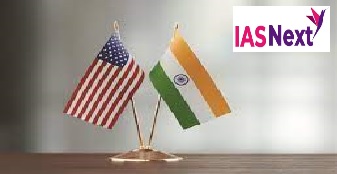CURRENT AFFAIRS
Get the most updated and recent current affair content on Padhaikaro.com
India seeks early return of democracy in Myanmar
- IAS NEXT, Lucknow
- 25, Dec 2021

Reference News:-
India has conveyed to the military rulers of Myanmar that it seeks early return of democracy in Myanmar.
What’s the issue?
Myanmar has been internationally isolated because of the violent crackdown on protesting citizens.
India’s demands:
- Myanmar’s return to democracy at the earliest.
- Release of detainees and prisoners.
- Resolution of issues through dialogue.
- Complete cessation of all violence.
Significance of India’s move:
Since February 2, India has expressed concern at the ongoing military campaign against the democratic elements in Myanmar but this statement has additional significance, as it is the first time the government has hinted that India is ready to mediate among various sides to end the crisis.
What’s happening in Myanmar?
The elected leaders of Myanmar were overthrown on February 1 this year in a coup by the army, which accused Aung Sang Suu Kyi’s ruling party of cheating in the November elections. The army’s allegation has been rejected by the previous election commission and international monitors.
India’s stand on Myanmar at the UN:
India recently abstained from voting on the United Nations General Assembly‘s (UNGA’s) resolution for an arms embargo against Myanmar.
- 119 countries voted ‘yes’, Belarus voted ‘no’ and 36 countries abstained, including Myanmar’s neighbors China and India, along with Russia.
Reasons behind India’s move:
- India said its views were not reflected in the draft resolution before the Assembly passed it.
- India also said it does not believe that the tabling of this resolution for adoption at this juncture, is “conducive to aiding the country’s joint efforts towards strengthening the democratic process in Myanmar.”
About the UN Resolution:
- The UN’s resolution demonstrated widespread global opposition to the Myanmar military and demanded that the country’s democratic transition be restored.
- The resolution called upon the Myanmar armed forces to respect the people’s will as freely expressed by results of the general election of November 8, 2020.
India is supporting ASEAN initiative on Myanmar and the ‘Five-Point Consensus’:
It includes:
- Immediate cessation of violence.
- Dialogue among all stakeholders in Myanmar for a peaceful solution.
- The appointment of a special Asean envoy to facilitate mediation.
- Aid to Myanmar.
- A visit to the country by the envoy.
Why should India be concerned about the situation in Myanmar?
For India, the stakes are high as instability within Myanmar has grave implications for the Northeast.
- There are reports of guerrilla groups in Myanmar reviving their activities and any breakdown of law and order will allow militant groups in the Northeast to take advantage of the situation.
What lies ahead for India?
India’s reaction is likely to be different this time. India does care about democracy in Myanmar, but that’s a luxury it knows it will not be able to afford for the time being. Why? Because,
- India’s security relationship with the Myanmar military has become extremely close, and it would be difficult to “burn bridges” with them given their assistance in securing the North East frontiers from insurgent groups.
- Changed image of Ms. Suu Kyi herself: Her image as a democracy icon and Nobel peace laureate has been damaged by her time in office, where she failed to push back the military, and even defended the Army’s pogrom against Rohingya in Rakhine State in 2015.
- Benefits for China: A harsh reaction from India, on the lines of that from the U.S., which has threatened action against those responsible for the “coup” unless they revoke the military’s takeover, would only benefit China.
- Apart from strategic concerns, India has cultivated several infrastructure and development projects with Myanmar, which it sees as the “gateway to the East” and ASEAN countries (For example: India-Myanmar-Thailand trilateral highway and the Kaladan multi-modal transit transport network, as well as a plan for a Special Economic Zone at the Sittwe deep-water port).
- Besides, India still hopes to help resolve the issue of Rohingya refugees that fled to Bangladesh, while some still live in India, and will want to continue to engage the Myanmar government on that.
Myanmar’s military Constitution:
It was the military that drafted the 2008 Constitution, and put it to a questionable referendum in April that year.
- The Constitution was the military’s “roadmap to democracy”, which it had been forced to adopt under increasing pressure from the west.
- It was also due to its own realisation that opening up Myanmar to the outside world was now no longer an option but a dire economic necessity.
- But the military made sure to safeguard in the Constitution its own role and supremacy in national affairs.
- Under its provisions, the military reserves for itself 25 per cent of seats in both Houses of Parliament, to which it appoints serving military officials.
- Also, a political party which is a proxy for the military contests elections.